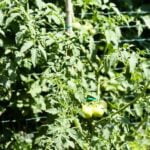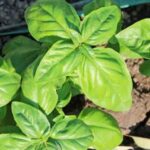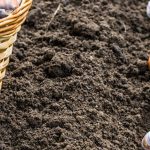Introduction
Planting fruit trees in the vegetable garden can have many beneficial effects on the soil quality and produce. Fruit trees help to provide shade for vegetables, which helps to reduce the stress of direct sunlight on the plants. They also improve the drainage of soil, reduce soil erosion, and increase water penetration by their root systems. Fruit trees also help to draw nutrients from below the surface of the soil due to their root depth and are often a source of aesthetic beauty when in bloom or with ripe fruit. In addition, fruit tree planting adds pollinators such as bees and other insects that can assist in more successful pollination of vegetable crops while providing necessary food sources for these beneficial creatures. Finally, growing a variety of carefully chosen fruiting species can enrich the educational experience that comes with gardening as well as supplementing dietary needs with fresh produce – both undeniably positive outcomes!
Planning and Preparation
When planning to add fruit trees to a vegetable garden, one must first weigh the pros and cons. one benefit is that both vegetables and fruits can be grown in the same space, however adding trees can limit the area for vegetables or change sun exposure for certain crops. After careful consideration of the garden layout and space, a selection of fruit trees should be made. Selecting compatible cultivars with equal consideration of desired harvest time is important to guarantee a steady food supply over an extended season.
The right site must be chosen for each plant. Trees need full sun but not windy conditions which could damage them. Consider if pruning will be needed – when selecting a species – as there are some plants that require more maintenance than others. Finally it is best to observe local soil conditions and choose trees that are suited for your particular location rather than those requiring large irrigations or specific nutrient requirements. Appropriate planting techniques should be used to further maximize tree growth and productivity. This includes proper planting depth, root-pruning and staking if necessary. Much success with fruit trees in any vegetable garden depends on giving them careful attention up front as poor health can cascade into other associated challenges down the line such as pest issues or fruit drop due to weak shoots or overly vigorous growth.
Planting Process
1. Choose a sunny spot in your vegetable garden to ensure the fruit tree gets plenty of sun to thrive.
2. Dig a hole two times wider than the root ball and just as deep.
3. Add organic matter such as compost into the hole, and mix it in with the soil. This will help provide additional nutrients for your fruit tree to grow properly.
4. Remove any wrappings from around the root ball that may have come with your new tree and make sure there aren’t any broken or damaged roots from shipping or handling of the tree.
5. Place your fruit tree in the center of the hole, making sure it is standing straight and at least 2-3 inches above ground level.
6. Backfill soil around your tree, making sure you don’t leave any air pockets where water could get trapped and cause damage to its roots or trunk.
7. Create an earth berm about 12-18 inches away from the base of your fruit tree, but make sure not to mound up soil against its trunk; doing so can cause rot within a few years time if left untreated!
8. Pour water slowly over the berm until you see it settling into the top inch or so of soil surrounding your newly planted fruit tree—be careful not to overwater!
9 .Mulch around your newly planted fruit trees by spreading 2-4 inches of material such as straw, grass clippings, or shredded leaves over the area underneath where it can meet up with soil without covering up any branches if it’s an established tree already! This helps retain moisture while adding additional nutrition back into what’s already been depleted (i.e., nitrogen) by planting activity earlier on in this process—especially important considering how heavy fruit bearing can be on plants’ energy reserves throughout hotter months ahead during their growth season!
10 Lastly, monitor regularly for pests like caterpillars that feed on both fruits and foliage alike before they become too populous or harmful; do this depending upon how much activity you notice when out ‘round near where your new/old trees stand each day—both sets will require vigilance throughout Fall/Winter seasons especially leading up until harvests arrive along with warmer winds sometime later down 2021’s roadmap ahead!
Establishing a Support System
When planting fruit trees in the vegetable garden, it is important to create a strong support system that will aid in their growth. Pruning and staking techniques are essential for strengthening the tree’s structure and helping it thrive. Pruning helps to maintain the trees balance, strength, and overall appearance. This can be done by cutting back young branches and removing dead or diseased wood. It is also important to remove any competing root systems from the base of the tree, so as not to interfere with its natural growth.
In terms of staking, it is beneficial to use stakes with tie-downs in order to provide stability during windy conditions or while they are still young and developing. The ties should be placed loosely enough so that they do not hinder the movement of branches or restrict growth. Staked correctly, the roots will become firmer over time due to increased soil tension against them. Lastly, regular watering should occur throughout periods of extreme hot weather; otherwise your fruit trees may become prone to drought damage which can impede their growth.
Pollination
When planting fruit trees in a vegetable garden, it is important to consider pollination. Pollination is the transfer of pollen from the male parts of the flower on one plant to the female parts of a flower on another plant. This results in fertilization, which produces viable fruit and vegetables. Pollinators such as bees, hummingbirds, and other beneficial insects play an essential role in this process. Having these pollinators around your garden will increase production of your edible plants and help create a healthy crop to harvest from. To help attract more beneficial insect pollinators, you can use native flowers and plants which are attractive to pollinators. Strategically placed birdbaths or shallow water sources for bees can also aid in boosting pollination efforts.
Maintenance and Monitoring
When it comes to planting fruit trees in a vegetable garden, proper care is essential for optimal growth and fruit production. Here are some helpful tips to keep in mind:
1. Site Selection – Choose a spot for the fruit trees that provides ample sunlight, air circulation, and good soil drainage. Avoid locations near fences or other structures; these can hinder optimum branch growth.
2. Watering – During periods of drought, it may be necessary to water the fruit trees by hand in order to supplement natural rainfall. Make sure that the water is well-distributed so that all parts of the root system receive their share of moisture.
3. Pruning – Annual pruning is crucial for a healthy tree with plenty of productive branches and leaves. In general, focus on removing dead wood and crossing branches; when done thoughtfully and properly, this will stimulate vigorous new growth while shortening time-to-harvest.
4. Mulch – A layer of organic mulch (e.g., compost or wood chips) around each tree helps retain moisture while protecting against weed competition and overexposure to air temperatures extremes—both important elements when growing fruit trees in an already crowded vegetable garden!
5. Pest Control – Monitor your plants regularly for signs of disease or insect infestation; as soon as you notice a problem, move quickly to get rid of undesirable pests without affecting beneficial species like bees, birds or other helpful creatures from your garden ecosystem.
Pest Control
Integrated pest management (IPM) is a strategy utilized to manage pests in fruit and vegetable gardens, such as those containing fruit trees. It uses a combination of cultural, biological and chemical methods to reduce or eliminate pests while keeping populations below levels that will result in economic damage. Basic IPM strategies include monitoring for pests (e.g., insect populations), selecting pest-resistant varieties whenever possible, growing diverse crops in the same area and manipulating cropping strategies to prevent or disrupt pests. Cultural techniques available for use with fruit trees include planting multiple varieties of the same tree species to reduce susceptibility to disease, mulching around plants to limit weed growth and prevent moisture loss from soil microclimates, and exposing the root system where appropriate, as well as pruning exposed branches carefully and removing diseased branches whenever possible. Biological methods may include introducing beneficial predators and parasites into the plant environment which can control pest populations without using pesticides. Examples might be ladybugs that feed on aphids or parasitic wasps which lay eggs inside other insects’ larvae bodies resulting in fewer of that species present on the trees. Chemical methods would be used as an alternative when integrated pest management measures have failed, although many chemicals are often highly toxic to people or the environment if used inappropriately. Therefore having knowledge about their proper use is paramount
Harvesting and Storage
When planting fruit trees in a vegetable garden, it is essential to harvest them at the right time. To ensure that your fruits are as fresh and flavorful as possible, you should consider when they will be ripest. While different varieties may have slightly different harvests times, generally speaking, they should only be harvested when the skin looks fully colored, with no sign of green or yellow.
Once the fruit has been picked, proper storage is just as important. It is advised to store the fruit in a cool dark space or even simply outside to encourage it to ripen further if necessary. The container used for storage should also be water-resistant and spacious enough for air flow around all sides of the fruit. If stored properly, some types of fruits can last for up to 6 weeks without expiring. Additionally, freezing fruit can both extend its shelf life and preserve the taste so that it can be enjoyed throughout winter months.
Conclusion
By planting fruit trees in one’s vegetable garden, a gardener can enjoy the rewards they bring in terms of having a wide variety of fresh produce. With proper care and given enough space, fruit trees can be quite easy to grow and maintain while still offering a bounty of delicious fruits. In addition to being produced easily, these fruits can also be eaten right off the tree or stored for later use. This makes it possible to have different kinds of fruits on hand at all times. Along with providing tasty snacks for both adults and children, planting fruit trees in the vegetable garden also helps limit the amount of pesticides that need to be used in order to produce healthy fruits. A final benefit is that you can often get more harvests out of the same space with fruit trees than with vegetables. All these added benefits make planting fruit trees in a vegetable garden an advantageous option to consider.

If you’re looking to get into vegetable gardening, or are just looking for some tips on how to make your current garden better, then you’ve come to the right place! My name is Ethel and I have been gardening for years. In this blog, I’m going to share with you some of my best tips on how to create a successful vegetable garden.





